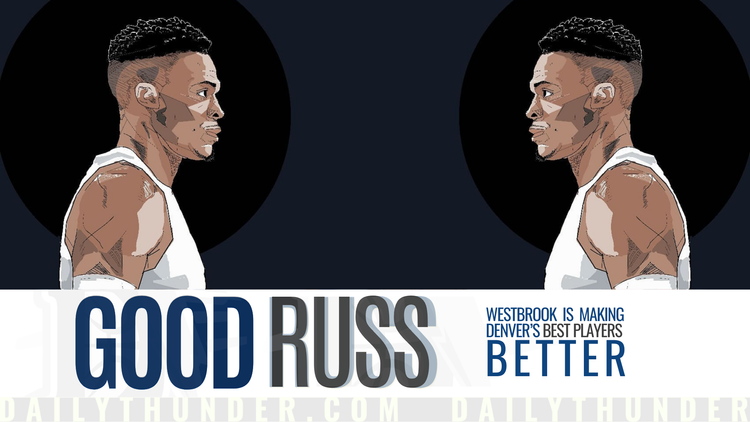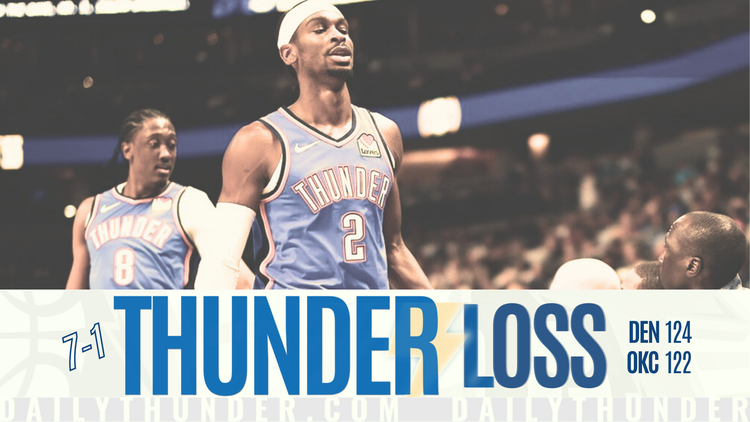#ThunderRank: No. 5 – Enes Kanter


Think back to the trading deadline in 2015. As the clock approached 2:00 PM CST, the Oklahoma City Thunder had yet to pull the trigger on any move. They were primed to move some pieces, but were locked in a sort of trade stasis. The rumor mill had the Thunder pulling off a major trade for Brooklyn Nets center Brook Lopez. But as usually is the case with the Thunder front office, the team pulled off a misdirection, and went with two simultaneous deals at the deadline that transformed the landscape of the team.
Gone were Thunder big man (and everyone’s favorite crazy uncle) Kendrick Perkins, disgruntled back-up point guard Reggie Jackson, and a couple other players. Replacing them on the team were DJ Augustin and Kyle Singler from Detroit and Enes Kanter and Steve Novak from Utah. For the Thunder, Kanter was the prize of the entire deal.
In Kanter, Oklahoma City finally had a big man that could score consistently from the post. After years of offensive futility on the interior, the team finally had someone other teams had to game plan for. When Kanter was brought in, the team was in the midst of a tortuous season. Kevin Durant was out with a re-fracture of his broken foot. Serge Ibaka was struggling with knee issues that eventually necessitated season-ending surgery. Steven Adams was out for about 15 games with a broken hand. And 30% of the rotation was turned over at the trade deadline.
Once Kanter caught his footing with the team, he and Adams formed a tandem that hearkened back to the days when teams actually had two post players on the floor. They rebounded with gusto, and gave Russell Westbrook two sure-handed targets on the pick and roll. Their play got the Thunder to within one game of the playoffs, but ultimately, fell short in the end.
The next season, with everyone finally healthy, Kanter finished third in the NBA in the Sixth Man of the Year award. He, once again, provided the team with interior scoring and a target for the team’s point guards. His defensive deficiencies prevented him from being a 30+ minutes per game type player, but when the opportunity arose to play heavy minutes, Kanter usually performed well. With Durant and Ibaka gone from this year’s team, the Thunder are hoping the success Kanter and Adams experienced in their absence two years ago will translate this season.
2015-16 Statistics82 GP, 21.0 mins, 12.7 pts, 8.1 rebs, 0.4 asts, 0.4 blks, 57.6% FG, 47.6% 3pt FG, 79.7% FT
Best-Case ScenarioWhen it comes to Kanter, everything comes back to his defense. If he’s middle of the pack defensively for his position then he’s a borderline All-Star based on his offensive numbers. But if he continues being one of the worst defensively at his position, then he will continue to be played off the floor. Best case scenario for the Thunder is Kanter improving defensively to the point where he can stay on the floor consistently for 25+ minutes per game.
During media day, when asked what he worked on during the offseason, Kanter stressed that he worked on his legs. “I think I worked on the legs a lot. I think that’s the key, just get faster, side to side, just get the legs stronger. That’s what I was working on.” I don’t know how effective it would be to individually focus on defense when defense is such a team-oriented activity. But if Kanter feels like his issues on D are related to his foot speed, then I applaud the effort. Maybe Kanter will become the Turkish Rocky Balboa and finally catch that chicken on foot.
Worst-Case ScenarioA lot like the rest of our power forwards, deficiencies on the defensive end may prevent Kanter from reaching his full potential. Two seasons ago, post All-Star break, Kanter allowed 56.4% of the FG that were defended at the rim to result in points. Last season he improved that mark 53.2%, which was on par with Tristan Thompson (52.8%), Andre Drummond (52.6%), and Gorgui Dieng (52.6%). If Kanter were to revert back to the numbers from two years ago, that would definitely be a worst-case scenario for him and the team.
He’s improved a significant amount, even if it has almost incremental, numbers-wise. But the problem with incremental improvements is that even if the numbers slip a little, they may return back to pre-improvement numbers.
Percentage he’ll be traded sometime in the next season:50% – Kanter is the Thunder’s largest (realistic) trade asset. He is the contract that is needed to possibly fetch a larger haul, like a superstar player with a superstar salary. Unfortunately, those players have to be available to even make an offer involving Kanter. The more likely scenario is waiting until the draft and trading Kanter to a team that has enough cap space to absorb his nearly $18 million contract next season.
But here’s the thing when it comes to trading Kanter: He actually wants to be here! I don’t know what Utah did to him, but this guy relishes the idea of playing in Oklahoma City and has become an integral part of the community and a beacon to the Turkish community in the city. You’re talking about a devout Muslim in one of the reddest states in the union, and people here adore him. Not like him; adore him. And you want to trade that guy? I know it’s a business, but still. Presti will probably think long and hard before pulling that trigger.
Plus, you can’t break apart the ‘Stache Bros. That cruel and unusual punishment for Thunder Nation.
Kanter’s Season PreviewI believe Kanter can build off of last season’s success and remain on the floor for longer periods of time. While he wasn’t necessarily terrible last season on the defensive end of the floor, he also wasn’t necessarily good. With Kevin Durant and Serge Ibaka missing from the defensive side of the ball, the onus will be even higher on Kanter improving on his defensive numbers from last season.
In addition, if Kanter wants to be on the floor more, he’s going to have to showcase that jump shot a little bit more this season. I’m not saying he needs to go full “stretch 4” mode, but he’s not that bad of an outside shooter when he does jack it up. When its all said and done, I think Kanter raises the 6th Man of the Year award at the end of the season, with averages of 15 points and 9 rebounds per game.





